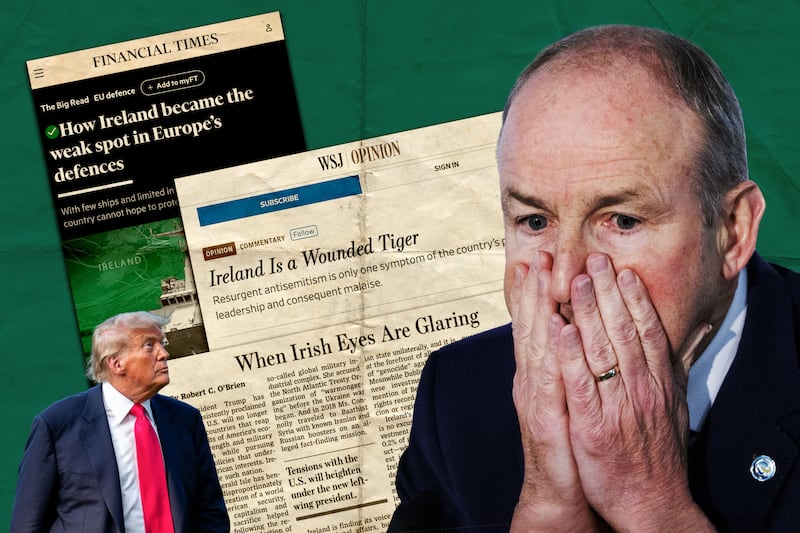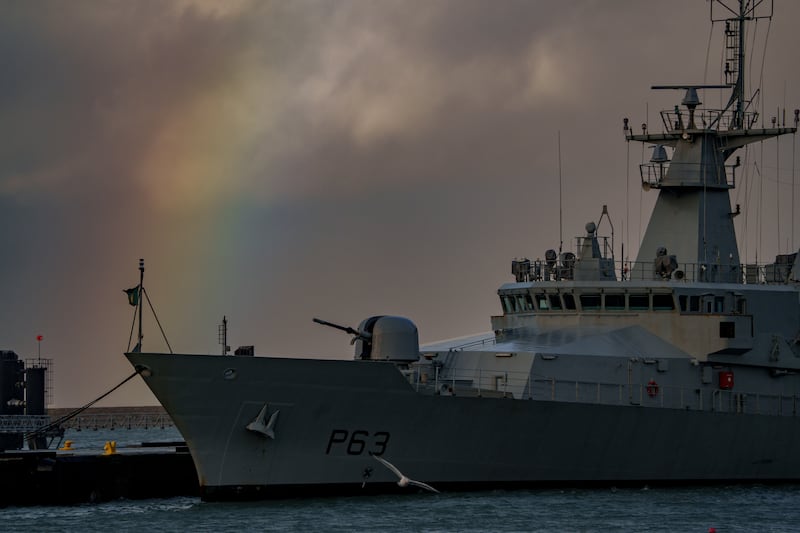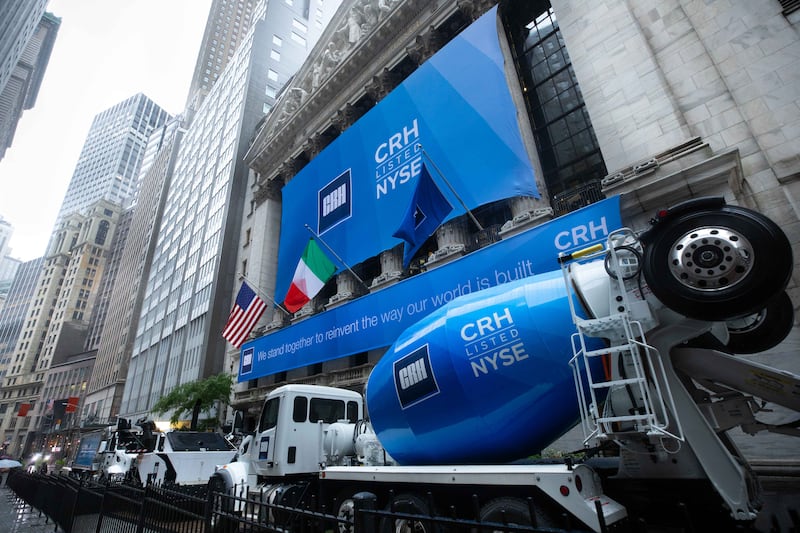Altered Light: Kathlyn O'Brien
Kevin Kavanagh Gallery, Dublin
****


Just inside the door of the gallery, Kathlyn O'Brien's Self Portrait gives us some idea of the kind of imagination we're dealing with. A face, apparently life-cast in plaster, lies on its side, resting on a thick wooden chopping board, which in turn lies on a towel draped over a simple trestle table. The back of the skull is missing, revealing a Meccano-like scaffolding of internal mechanical structure. Polished and variegated, the plaster face incorporates blotchy colouring; red and pale green and flesh tint, giving it a meaty quality and planting the unsettling thought that the skin has been peeled away.
The combination of imagery, ideas and materials, including domesticity, cookery, dissection, metaphysics and very dark humour, subtly but unmistakably nudges us into the territory of the macabre. While, at a pinch, you could choose to read them as engaging metaphysical speculations on time, identity and mortality, O'Brien's sculptures are tales of mystery and imagination with a menacing edge. As if to emphasise that, turn immediately right in the gallery and a vast piece occupies the wall. It is an enormous pendulum, frozen in place. Walter Benjamin, looking to Scheherazade, offered the insight that telling stories is a way of postponing the future. Perhaps, as long as we explore O'Brien's labyrinth, time will be stilled.
In Edgar Allen Poe's The Pit and the Pendulum, the terrified but resourceful protagonist escapes death by enticing rats to chew through his bonds before a razor-sharp pendulum slices through his flesh. Opposite Pendulum in the gallery there is another head sculpture, Monica. She could be dreaming. But one big tear-shaped segment of her radiant crown has broken loose and swung threateningly down like a pendulum. Precariousness, impending doom, confinement and the tenuous possibility of escape run through O'Brien's work. That tenuous possibility is, to be brutally honest, often snuffed out completely. Even her Shrine, despite its benign title, bears a sneaky resemblance to a guillotine. In Slippage, a small temple structure teeters on the brink as a vast supportive scaffolding starts to disintegrate beneath it.
O'Brien makes inventive use of myriad found materials, often intricately crafted and minutely patterned. Along with Self Portrait, other mechanisms abound, usually time-related as with the pendulum, or pieces of clockwork of various kinds, including a music box. The accumulation of detail and the references to ritual and repetition have a relentless quality. There is a lot of time, is the implication, but it's running out.
Does the title piece, Altered Light, offer a means of escape? In it, domesticity is again subverted. Fragments of elegant chair frames are refashioned into a delicate, curved ladder, its sections bound together by sash cord. It sounds an optimistic note, however uncertain the promise it holds.
Until February 11th, kevinkavanaghgallery.ie
Sahasrara: Michael Beirne
Molesworth Gallery, Dublin
****
Michael Beirne's paintings in Sahasrara are remarkable objects. In their surreal imagery and obsessive detail – it seems fair to use the word obsessive without any of its negative connotations – they recall the teeming, crowded, fantastic visions of Hieronymus Bosch. And Beirne acknowledges Bosch, with other northern Renaissance painters, as an influence. He also mentions Indian Moghul miniatures (the Chester Beatty Library houses a stunning collection) "and Vedic and Tantric calendars", plus some symbolic Christian iconography.
Not that he systematically cross-references all of this material, or produces revised versions of any or all of it. Rather it informs and feeds into the working process to produce strange, hallucinatory visions of a very personal nature: his own inner world. In a closely argued, helpfully informative accompanying text, Dr Austin McQuinn points out that the paintings are not imaginative inventions for their own sake, virtuoso exercises in the fantastic. Rather they are a genuine attempt to “gauge the status of the interior world of the self, its spiritual register, its physical needs and dilemmas, and they become survival mechanisms in the psycho-physical phenomenon that is being alive”.
They are convincing as such. Look at them in all their amazing, minuscule detail and you’re likely to be persuaded that Beirne is completely invested in them as documents of his own experience of being. He is not trying to entertain or divert, but attempting to reflect the strange experience of conscious and unconscious living. McQuinn points out his animism, whereby everything he depicts is energised and brought to vivid life because everything – “plant, machine, baby, rock, moon” – is equally conscious and impelled towards “becoming itself”.
To begin each new work, Beirne in a sense creates a world. It starts as a realm of emptiness, a blank, and then gradually comes to life. Actually, it comes to frenetic, busy, multifaceted, multilayered, interconnected, unpredictable, metamorphic, psychedelic life. Which is where it could turn into a self-indulgent trip, but doesn’t, thanks to Beirne’s resolute honesty and determination. Such is their level of detail, and their chromatic intensity, that reproduction won’t necessarily do justice to the paintings. But the actual objects, painted on gesso on wood panels, are fantastically rich, elaborate objects.
McQuinn does not try to drain the work of its mystery and power, but he sees the overall mood as transgressive in the way that everything is infused with its own wild, anarchic energy. There is no provision for a normative view, no anchor of convention. If you follow Beirne’s imaginative trajectory, there is no knowing where you will end up, which is probably a reasonable reflection of his own openness to life, the universe and everything.
Until January 31st, molesworthgallery.com


















